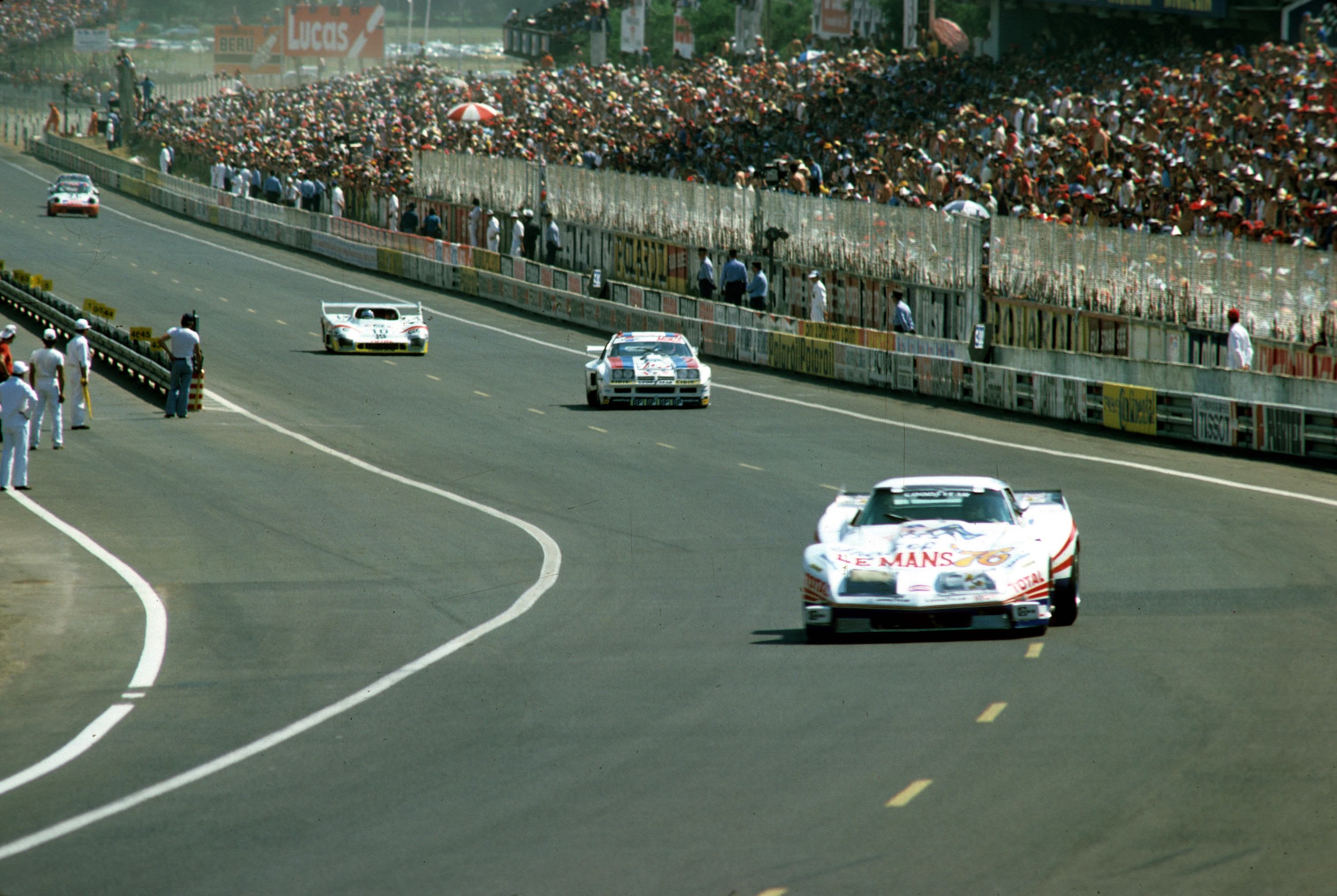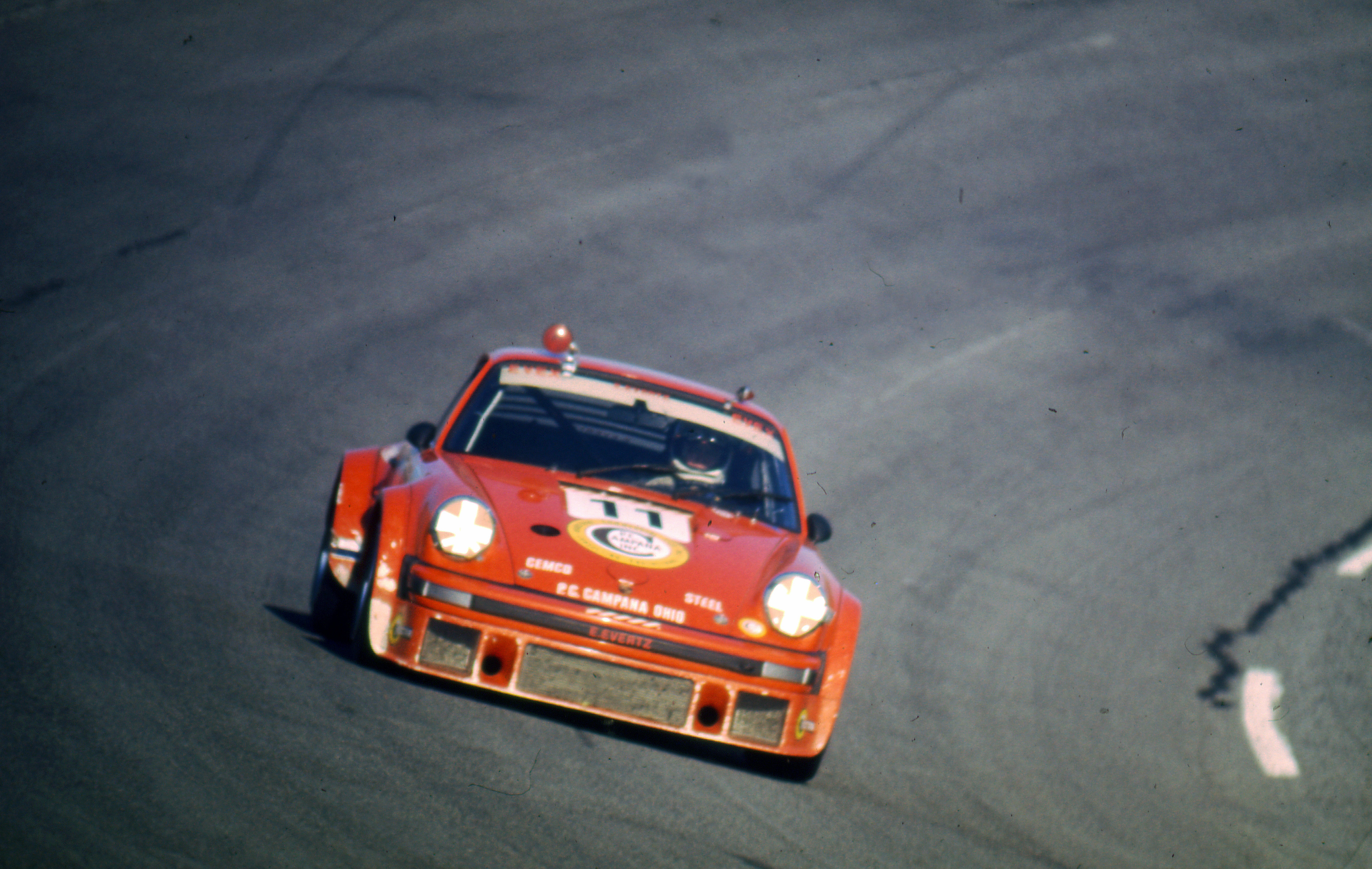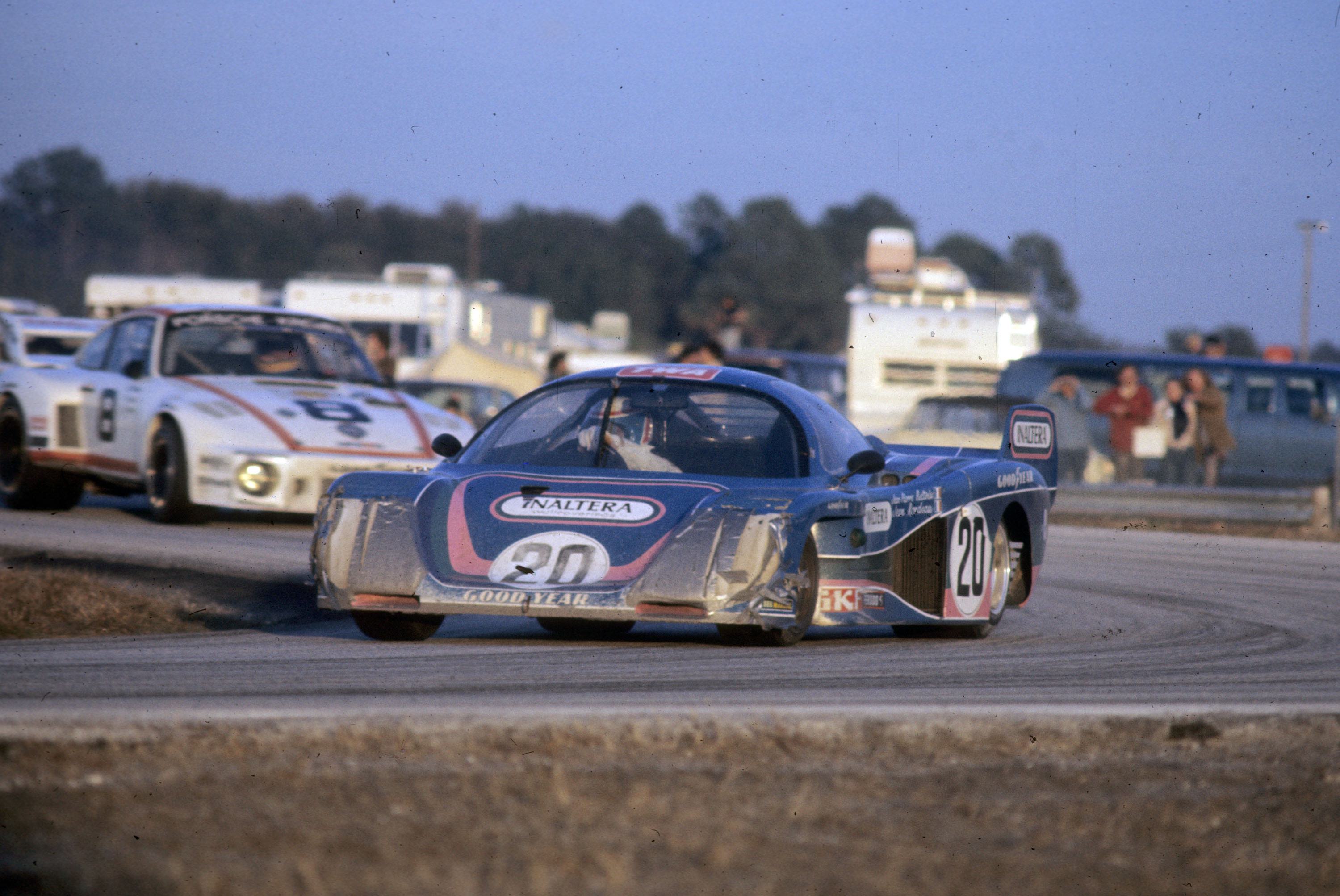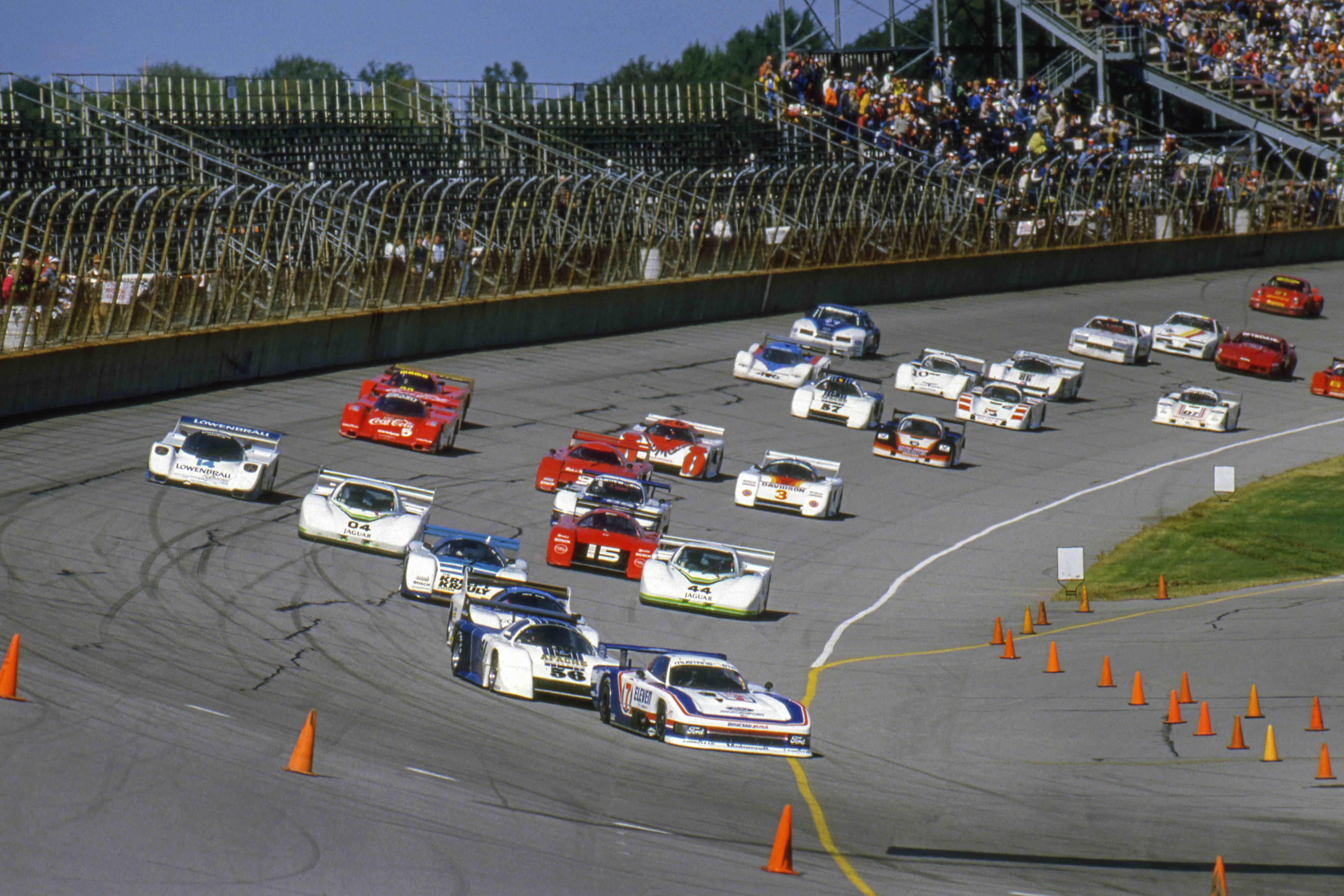Jordan Taylor has established himself as a formidable competitor at the 24 Hours of Le Mans, showcasing his exceptional talent in endurance racing. As a factory driver for Corvette Racing, Jordan has played a key role in multiple Le Mans campaigns, contributing to podium finishes and class victories. Known for his speed, consistency, and racecraft, he has mastered the demands of the Circuit de la Sarthe, excelling in both day and night stints. His adaptability and strategic mindset have made him a crucial asset to his teams, solidifying his reputation as one of the top endurance racers of his generation. Jordan’s Le Mans performances continue to reflect his dedication to excellence in one of motorsport’s most grueling and prestigious events.
This presentation is hosted by the ACO USA’s Evening With A Legend series, in partnership with the IMRRC, so we ask that you PLEASE REGISTER FOR THIS EVENT.
Hurley Haywood, a name synonymous with endurance racing excellence. Over the course of 13 attempts at the legendary 24 Hours of Le Mans between 1977 and 1994, Hurley cemented his legacy as one of the greatest sports car drivers of all time. With three overall victories and five podium finishes, all behind the wheel of a Porsche, his story is one of relentless determination, precision, and an uncanny ability to push both man and machine to their limits.
We’ll break down his Le Mans career, the highs and lows, and what made Hurley Haywood a legend in the world of Le Mans and beyond.
This presentation is hosted by the ACO USA’s Evening With A Legend series, in partnership with the IMRRC, so we ask that you PLEASE REGISTER FOR THIS EVENT.
On Saturday evening, June 22, a very special Center Conversation was hosted by the Research Center. The program focused on the amazing history of the Camoradi #4 Corvette that finished 10th in the 1960 24 Hours of Le Mans.
The panel consisted of Richard Prince, author and official photographer for the GM Corvette Race Team; Dominic Testa, owner of the car; Chuck Schroedel, who was a member of the Camoradi team at Le Mans in 1960; and a special guest appearance by Laura Klauser, the GM Sports Car Racing Program Manager.
A GM-produced 30-minute promotional film from the Le Mans event in 1960 was shown, and each member of the panel gave their insight into the history of the car. Chuck’s commentary from actually “being there” in ’60 was especially memorable. Ms. Klauser ended the presentation by taking us from Corvette racing in 1960 to the 2024 Corvette Racing programs competing not only in the United States, but in race series around the world.
A great, enthusiastic crowd of race fans and ’Vette lovers were on hand, and we extend our thanks to the Rochester Corvette Club, which had multiple, beautiful ’Vettes parked outside the Center adding to the fun. After the presentation, many came back to the Center for more rapport with the speakers.
As part of an ACO USA membership you’re invited to join Evening With A Legend, a series of presentations exclusive to ACO USA Members where a Legend of the famous 24 Hours of LeMans race will share stories and highlights of the big event. However, this month the IMRRC in partnership with the ACO USA is proud to help share Rob Dyson’s Le Mans story with you! Rob is a long standing supporter of the IMRRC and get his start in racing at Watkins Glen International in the ’70s. And through the Motoring Podcast Network you have a chance to sit in during a live recording with Rob, ask questions, and hear his Le Mans journey first hand!
REGISTER FOR THIS EVENING WITH A LEGEND EVENT
Rob Dyson is a New York based businessman and retired professional racing driver with a long association with Watkins Glen International and the International Motor Racing Research Center. Following completion of his licensing school at Watkins Glen in 1974, Dyson began competing in amateur SCCA competition. In 1981 he won the Sports Car Club of America’s GT2 national championship.
Dyson began racing professionally in IMSA GTO and the SCCA Trans-Am Series in 1982. The following year, to support his professional racing efforts, Dyson founded the Dyson Racing Team, which over the next few years grew to be one of America’s premier sports car racing teams. From it base in Poughkeepsie, over the course of nearly four decades the team won 19 championships, 72 race victories, started 72 times from the pole and achieved 224 podium finishes. Among the team’s notable accomplishments is a pair of overall victories in America’s premier endurance race, the Rolex 24, at Daytona International Speedway. In 1986 he found himself behind the wheel of a Porsche 956 at the famed Circuit de la Sarthe: Le Mans.
The team fielded cars during the heyday of the IMSA Camel GT, winning its first time out with a Porsche 962 at Lime Rock Park. Under Dyson’s leadership the team went on to successfully field entries in Indy car, the World Sports Car Championship, the United States Road Racing Championship, the American Le Mans Series (where the team scored two championships), the Rolex Sports Car Series, and the Pirelli World Challenge, where the team scored Bentley’s first-ever North American race victory.
During his 21 seasons as a professional racing driver Dyson drove in 92 races, scoring four overall race wins (including the 1997 Rolex 24 at Daytona) and a total of 18 podium finishes. Dyson continued to compete episodically in professional racing through 2007 and today remains active driving his collection of vintage Indy cars in a variety of demonstration events. Dyson’s personal historic Indy car collection ranges from a 1913 Isotta Fraschini tipo IM to Johnny Rutherford’s 1978 Budweiser McLaren M24B, and includes the 1961 Kimberly Cooper Climax, the first successful rear-engine car to compete in the 500.
Named chairman of the board of directors of the Indianapolis Motor Speedway Museum in 2021 following a decade as a member of the board, Dyson is guiding the institution through its $89 million transformational renovation as it charts its future path as the repository of the history and related artifacts of America’s oldest active and most storied racing facility.
In 2011 Dyson donated to the IMRRC the historic archives of National Speed Sport News, America’s premier motorsports news publication since the late 1930s.
Dyson is the chairman and chief executive officer of Dyson-Kissner-Moran Corporation, a privately-owned international holding company.
REGISTER FOR THIS EVENING WITH A LEGEND EVENT
Membership into the Automobile Club de l’Ouest – the founder and organizer of the 24 Hours of Le Mans – is open to all! The Club hosts events in Le Mans and around the world, attracting fans who enjoy their shared passion for motoring and motor racing. Tired of sitting in the pits. Explore the many advantages of becoming an ACO Member today!
The following is an excerpt from “IMSA 1969-1989” written by Mitch Bishop and Mark Raffauf that tells the inside story of how IMSA got started and its first 20 glorious years. Available from Octane Press or wherever books are sold.
______________________________________________________________________________
John Bishop’s early vision for sports car racing in the U.S. was influenced by the Federation Internationale de le’Automobile (FIA), the governing body for all international racing. But his decision in 1980 to create the IMSA GTP category that differed significantly from Group C regulations set down by the FIA the following year wasn’t an easy one. In the end, it resulted in a hugely popular class that would distinguish IMSA and racing in North America from the rest of the endurance racing world for more than a decade.
By the mid-1970s, the FIA class structure (Groups 1-6) for endurance racing was floundering in Europe, while IMSA’s race entries were growing. IMSA’s success did not go unnoticed by the FIA and the organizers of Le Mans, the most prestigious event on the international sportscar calendar. In 1976, an event partnership between Daytona International Speedway and the Automobile Club de l’Ouest (ACO), the Le Mans organizers, brought IMSA’s popular Corvettes and Monzas to the famed French 24-hour race, where they ran in a special class. John Greenwood’s Corvette and Michael Keyser’s Monza both ran strongly, even leading the Group 6 prototypes early in the race. Greenwood recorded the fastest top speeds on the Mulsanne straight that year, an astounding 215 mph. Although both cars were eventually forced to retire with mechanical woes, non-homologated American cars from IMSA were making a mockery of the FIA rules structure.
In the early laps of the 24 Hours of Le Mans in 1976, John Greenwood’s Corvette leads Michael Keyser’s Monza and the eventual runner-up Group 6 Mirage Ford GR8. The IMSA class cars were popular with the fans and ran strongly before both dropped out with driveline/transmission problems. Photo: autosportsltd.com
The situation led to a new and productive relationship between Bishop and Alain Bertaut, the Director of Competition for the ACO. Both men shared similar values and appreciation for giving the private entrant a fighting chance. They also agreed that controls were needed to reign in the rapidly escalating costs of competition. But most importantly, they saw eye-to-eye on the importance of putting on a good show for paying spectators.
Bertaut, Bishop and Bill France Sr. began working together to encourage participation by the same teams and manufacturers in the 24-hour races at Daytona and Le Mans, including an invitation by the ACO for NASCAR stock cars to race at Le Mans in 1976, when NASCAR drivers Dick Brooks and Dick Hutcherson drove a Junie Donlavey-entered Ford Torino. Eventually, an entire class was devoted to IMSA at Le Mans due to the cars’ popularity with the European fans, a situation that lasted through the 1982 race.
The first turbocharged Porsche 934 ever to race anywhere in the world was at the 24 Hours of Daytona in January 1976, eligible only by special invitation to the World Championship of Makes Manufacturer championship. It finished forty-first, dropping out with mechanical issues. Photo: autosportsltd.com
In a reciprocal arrangement, European-based cars were brought to the U.S. to race in the 24 Hours of Daytona, including the first Porsche 934 to race anywhere in the world in 1976, and the Inaltera built by Jean Rondeau that raced in 1977. The first Porsche 935s showed up at Daytona in 1977 as well, even though they were not yet eligible to compete in other Camel GT races. The Inaltera was entered in the “Le Mans GTP” class, a catch-all for cars that did not meet FIA Groups 1 through 6 regulations or anything else, and had been conceived by the ACO as a cost-effective alternative to Group 6. Over the years, the Le Mans GTP class included the WM-Peugeot, Rondeau 378 and the Porsche factory 924 Turbo GT cars.
The Martini & Rossi–sponsored factory Porsche 935 and a similar Kremer customer car were the first 935s to compete in an IMSA event, shown here on the front row of the grid at the 24 Hours of Daytona in 1977. Inaltera “Le Mans GTP” prototypes are on the second row. Both car types competed as part of the World Championship of Makes. Photo: ISC Archives & Research Center/Getty Image
The IMSA-ACO relationship continued to grow. IMSA representatives regularly attended the 24 Hours of Le Mans to build relationships and help the U.S. teams participating there. Dick Barbour, Paul Newman, and Rolf Stommelen driving a Garretson-prepared Porsche 935, almost won the race overall in 1979, driving an IMSA-class car. All the signs pointed to a flourishing relationship between IMSA and the ACO, with movement toward a uniform set of technical rules that would guide both sides of the Atlantic.
The relationship flourished to the point that Bertaut traveled cross country in the Bishop’s Newell Coach during the summer of 1980 and the following year his daughter interned at the IMSA headquarters. The ideas that resulted in IMSA’s GTP class were hatched on that long cross-country drive in the motorhome. The class was envisioned as a simple prototype car governed by a sliding power-to-weight formula that would be attractive to both manufacturers and private constructors. Jean Rondeau had shown the way by winning Le Mans in June of 1980 in a car designed and built entirely in his garage, fitted with a detuned Cosworth customer Formula One engine.
From Bishop’s point of view, Porsche and its 935 were dominating the 1979 and 1980 seasons and he knew that it would be difficult to continue growing the Camel GT Series unless something changed. Although the racing was close, he worried that no one would continue to pay to see a Porsche parade. The AAGT concept had diversified the fields for a while, but the cars were increasingly uncompetitive against the onslaught of 935s, even with more relaxed GTX rules that allowed for tube frames, wider wheels and essentially unlimited bodywork tweaks. BMW, Nissan, and Ford had all been represented in the GTX class during this time, but only as solo or two-car efforts; there were no customer cars. And the price for a new Porsche 935 was in excess of $200,000, a huge sum at the time. Privateers were getting priced out of the game.
“The bottom line is that private entrants fielding American-powered cars were never going to be able to keep up with the money invested by large manufacturers like Porsche, who were continually developing customer cars with virtually unlimited funds,” remembered Bishop. “We needed something new. We liked the general direction that the ACO and FIA were taking that allowed entrants to pair prototype monocoques with different engines, but somehow the Group C rules had become driven by fuel consumption as a result of the recent gas crisis. The Europeans seemed out of touch with what sold tickets in the U.S. We didn’t think fans wanted to watch high-powered racing cars coast by in an effort to save gas to make it the end of the race.”
“We were initially inspired by the Inaltera cars that showed up for the 1977 24 Hours of Daytona in a special prototype class,” Bishop continued. “The cars were fast, good looking and competitive. Best of all, they were built with off-the-shelf parts by Jean Rondeau, a private entrant, so we knew it could be done on a reasonable budget. Given the availability of a wide variety of reliable engines, our vision was to repeat a bit of the same formula that had made the AAGT class such a success. Our goal was to create a prototype class that could compete head-to-head with the 935s, but at a lower price point.”
One of two Inaltera “Le Mans GTP” class cars during the 24 Hours of Daytona in 1977. The privately designed and built machines became the inspiration for the IMSA GTP class rules developed in 1980. Photo: autosportsltd.com
After Rondeau’s victory at Le Mans in 1980, the IMSA-ACO relationship continued to gain steam. By contrast, the FIA’s World Championship of Makes continued to lose traction. Grids were small and participation by manufacturers sporadic. After much hand wringing, the FIA announced a response in 1980. It would abandon the Group 1 through 6 model and revamp all technical regulations into a new structure of Groups A, B, and C. Group A encompassed touring cars, Group B included GT cars along with limited production touring cars, and Group C defined sports prototypes.
There was one problem: IMSA had already publicly committed to the GTP concept as the alternative to the dominating Porsche 935. By the time of the FIA’s announcement on Group C, the GTP concept was well underway with chassis layout, engine options and a weight/displacement scale already decided on with mutual IMSA/ACO support. And manufacturers like Lola, BMW, and March were already building cars.
The hope was that all parties would embrace the IMSA GTP concept given that IMSA and the ACO were aligned and cars were already being built. However, the FIA went in another direction for its Group C class rules by insisting on a fuel consumption formula for the World Championship of Makes.
Without Le Mans on the World Championship of Makes calendar, it was doubtful whether the FIA series could survive. With an impasse looming over which rules would be used at Le Mans, the FIA, through its control of the World Championship of Makes, decided to play hardball. Jean-Marie Balestre was the president of the FISA – the sporting arm of the FIA – and also happened to be the president of the organization that controlled auto racing in France known as the Fédération Française du Sport Automobile. Wearing both hats, Balestre threatened to not to list the 24 Hours of Le Mans as an international event unless the ACO adopted the new Group C regulations along with the fuel consumption format. The ACO was forced into a corner, because not being listed would create licensing and legal havoc, among other problems. Although Bertaut was more philosophically aligned with IMSA, he had no real choice but to acquiesce to the political pressure in France. The ACO agreed to adopt the FIA Group C formula.
Although IMSA GTP and Group C cars turned out to be very similar, there were three critical technical differences that would keep them apart. IMSA required the driver’s feet to be behind the centerline of the front axle for safety reasons from the earliest time the rules were drawn up. Second, the fuel consumption formula favored smaller displacement, predominantly European racing engines that did not offer privateers, American or Japanese brands an equal opportunity to succeed without significant investment in new technologies. And finally, IMSA GTP rules required the use of production-based engines.
Due to these fundamental divides, IMSA went its own way. IMSA GTP chassis from Lola, March, Jaguar, and Ford appeared by 1983 and won the championships in 198 and 1983 through 1993. With the introduction of Group C in 1982 first at Silverstone and then at the 24 Hours of Le Mans, the IMSA class subsequently fell away at the famed event. The Group C specifications did help the newly renamed World Endurance Championship of Makes regain its footing in Europe and became the World Sports-Prototype Championship in 1987. At the same time, IMSA grew and succeeded with the IMSA GTP concept in the U.S. Meanwhile, Japanese rule makers developed a similar, but unique style of prototype racing in Japan that didn’t exactly match either Group C or IMSA GTP.
By 1984, IMSA Camel GT fields were packed with GTP machines, as illustrated here at Michigan International Speedway. A Ford Mustang GTP leads from a few March chassis, two Jaguars, two newly introduced Porsche 962s and others. Photo: Bob Harmeyer
As a result, three separate prototype championships evolved that dominated their respective markets for over a decade. Ironically, this became the most successful period of global sports car racing in history. Manufacturers that participated in Group C included Lancia, Porsche, Mercedes, Ford, BMW, Nissan, Jaguar, Toyota, Mazda, Rondeau, Sauber, Spice, Lola, Argo, Tiga, and Alba, among others. A similar group or road car and racing car manufacturers participated in IMSA: Porsche, Jaguar, Nissan, Mazda, Ford, BMW, Toyota, Acura, Spice, Argo, Tiga, and Alba, in addition to U.S brands Chevrolet, Buick, and Pontiac. In Japan, Nissan, Toyota, Mazda, and Porsche all took part. Not all of these brands necessarily participated in each series at the same time, but the U.S. market drove the creation and development of more manufacturer GTP cars than either of the other two series.
The technical situation changed in the FIA after some frightening accidents in Europe. In 1985, the FIA finally adopted the IMSA rule concerning the placement of the driver’s feet behind the front axle centerline. With this change, a common chassis could then be used around the world in the European-based World Endurance Championship of Teams, the U.S.-based Camel GT Series, and the Japanese Sports Prototype Championship.








